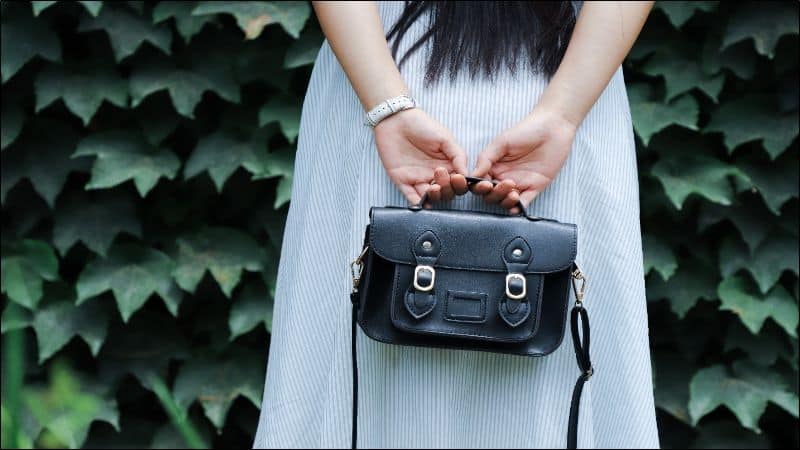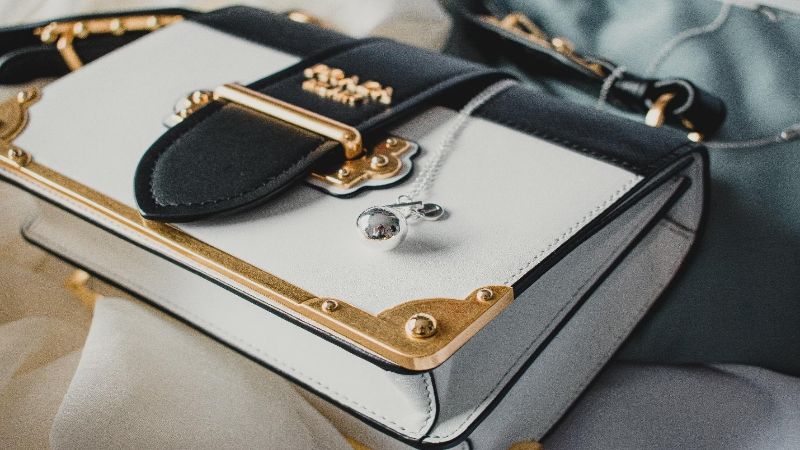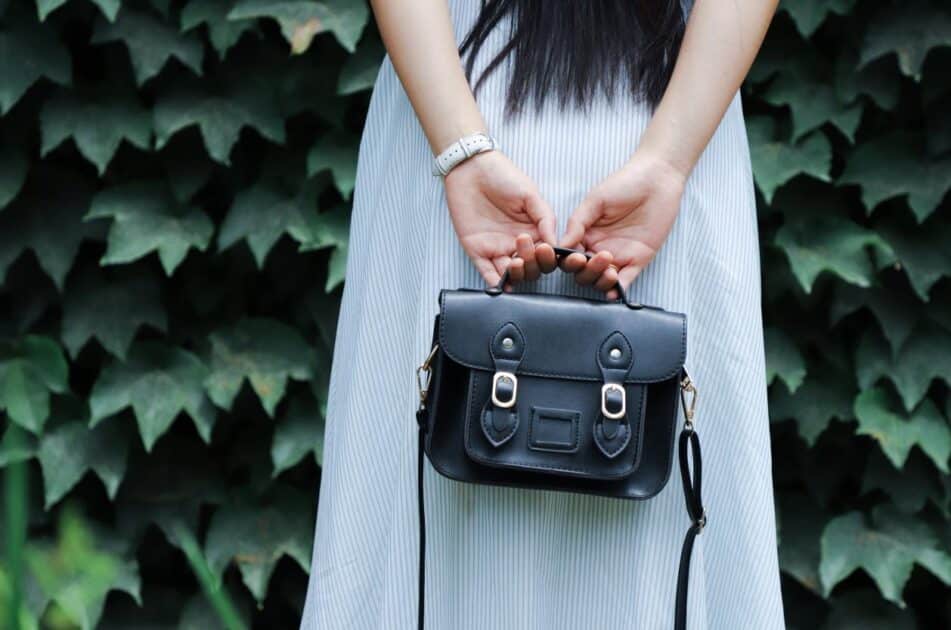Ever glanced at your favorite handbag and noticed it’s lost its luster? You’re not alone. Whether it’s a trusty tote or a designer clutch, keeping your bag clean without the risks of washing can be a real head-scratcher.

But don’t worry, you’ve got this! With a few simple tricks up your sleeve, you’ll have your bag looking as good as new in no time. Get ready to give your cherished accessory the TLC it deserves, all without a drop of water.
Why You Shouldn’t Wash Your Handbag
Handbags are more than just a convenient way to carry your essentials; they’re a statement of your style and often a significant investment. Here’s why dunking them in water is a big no-no.
Material Integrity: Your handbag’s material plays a crucial role in its overall look and durability. Washing can be disastrous.
- Leather: Loses its supple texture
- Suede: Becomes matted or discolored
- Fabrics: May shrink or bleed colors
Hardware Damage: Water isn’t a friend to the metal parts of your handbag.
- Zippers: Can rust, causing them to jam or break
- Buckles and chains: Lose their luster or tarnish
Shape Loss: Like a sweater that loses its form after a wash, your handbag can suffer the same fate. Immersing it in water can warp its structure, making it look saggy and misshapen. Internal materials that provide shape are often not water-friendly.
Adhesive Breakdown: Many handbags are crafted with adhesives that aren’t meant to handle the rigors of washing.
- Stitches can come loose
- Bonded areas may separate
Ultimately, you’ve got brag-worthy handbags because they’re made with high-quality materials and professional craftsmanship. Washing them squanders that craftsmanship and potentially leaves you with a bag that’s worse for wear. Stick to the non-water methods shared earlier to keep your handbag in peak condition.
Assessing the Material of Your Handbag
Before diving into the cleaning process, it’s crucial to know what material your handbag is made of. Different materials require specific care methods, and using the wrong technique can do more harm than good.
Leather Handbags
If your bag is leather, it’s sensitive to water and can easily stain. Opt for a dry, soft cloth to gently wipe the surface. In case of stains, a specialized leather cleaner is your best friend. Test it on an inconspicuous area first to avoid any mishaps.
Suede Handbags
Suede is even more delicate than leather. Avoid water and instead, use a suede brush to softly brush away dirt and maintain the nap. For persistent spots, seek out a cleaner designed specifically for suede.
Fabric Handbags
Fabric bags can vary widely, from canvas to silk. Always check the manufacturer’s care label before proceeding. Generally, a lint roller or a soft-bristled brush can help remove dust and loose dirt without introducing moisture.
Hardware and Embellishments
Don’t forget the hardware. Metal parts like buckles and zippers can be wiped with a dry cloth. If they’re tarnished, a bit of metal polish goes a long way – just be sure to cover the surrounding material to protect it.
For handbags with sequences or other adornments, handle with extreme care. Avoid any cleaners or techniques that could dislodge them. Often, a gentle dusting will suffice.
Remember, always spot-test any cleaner, regardless of the material. Consistency is key to preserving your handbag’s appearance and longevity. When in doubt, consult a professional cleaner who specializes in luxury handbags. They’ll assure the right approach tailored to your handbag’s material makeup.
Step 1: Prepping Your Handbag
Before diving into the cleaning process, preparation is key. Begin by emptying your handbag. Shake it gently to remove any debris or loose dirt trapped at the bottom or in the pockets. This is a crucial step to prevent scratching the interior while cleaning.
Next, evaluate the bag’s condition. Look for areas that are particularly dirty or stained. These spots will need extra attention during the cleaning process. If your handbag has a detachable strap or any removable hardware, take it off. It’s easier to clean the bag thoroughly when it’s stripped down to its essentials.
With your handbag empty and assessed, protect the work surface with a clean, soft cloth or towel. This will shield both the handbag and the surface from potential damage. Once your area is prepped, you’re ready to start the actual cleaning.
If your handbag comes with a care card or manufacturer’s instructions, give that a quick read. It might have specific recommendations for your particular bag. Don’t ignore these; they’re often the difference between a well-maintained handbag and a damaged one.
« Keep Handbags in Shape: Pro Tips to Extend Their Life & Beauty
How to Choose the Right Handbag: Find Your Perfect Match »
Remember to spot-test any cleaning product you’ll be using. Find a small, inconspicuous area on the bag and apply a tiny amount of the cleaner. Wait for it to dry to ensure it doesn’t cause discoloration or damage. This step safeguards your investment against unwanted surprises.
Once you’ve successfully prepped and spot-tested, your handbag is ready for a thorough, but gentle cleansing.
Continue onto the next steps to learn the specifics of tackling stains and maintaining the pristine condition of your handbag.
Step 2: Removing Surface Stains
Once you’ve prepped your handbag and spot-tested your cleaning method, it’s time to tackle the stains. Each type of stain and handbag material requires a different approach—but don’t worry, you’ve got this.
Ink Stains: These are the tricksters of the handbag world. On leather, gently dab with a cotton swab soaked in rubbing alcohol. For fabric, you can try the same, or use a specialized stain remover. Be patient; it might take a few tries.
Oil and Grease: Sprinkle some cornstarch or baking soda onto the stain and let it sit for a few hours. Once it’s absorbed the oil, brush it off with a clean, soft brush. For persistent stains on leather, a degreasing agent may be necessary.
Water Spots: It’s ironic how water, the elixir of life, can be a nuisance for handbags. For leather, let it dry naturally and then treat with a conditioner. Suede requires a bit more care, gently buff with a suede brush to lift the stain.
Makeup Stains: Trust a gentle baby wipe to do the job without harsh chemicals. If that doesn’t work, a small dab of mild soap on a damp cloth might just save the day.
Remember, the key is to act quickly and to always test your cleaning method on a small, inconspicuous area first. With a steady hand and the right tools, you can keep your handbag looking its best. Keep at it, and don’t be afraid to treat the area more than once if needed. Now, let’s move forward and make sure your beloved accessory stays pristine all year round.
Step 3: Dealing with Odors
Battling undesirable scents in your handbag doesn’t have to be a hassle. First off, absorb the smells with household items like baking soda. Simply fill a container or sachet with baking soda and leave it in your bag overnight. Baking soda’s natural absorbing properties will work to neutralize the odors.
If you’re dealing with something a bit more stubborn, try activated charcoal. This isn’t your average BBQ charcoal but a treated product known for its odor-eliminating prowess. Place a few pieces in and around your handbag, ensuring they’re secured in a fabric bag to avoid direct contact with your handbag’s interior.
Alternatively, consider the trusty dryer sheet method. Pop in a couple of scented dryer sheets to infuse a fresh laundry smell. While these won’t remove the odors, they’ll mask them relatively well, buying you some time.
For a more natural approach, grab some essential oils. A cotton ball with a drop or two of your favorite scent can work wonders. Essential oils like lavender or citrus can give a pleasant, long-lasting freshness without the chemicals.
Remember that ventilation is key. Sometimes, all your handbag needs is a good air-out. Leave it in a well-ventilated space or even by a window where fresh air circulates freely. Just make sure it’s out of direct sunlight to prevent fading.
Always check for colorfastness before trying any of the above methods to prevent possible damage to your handbag’s material. Spot testing will ensure the safety and longevity of your cherished accessory.
Keep your handbag smelling fresh with these simple tips and enjoy the clean, fragrance-filled results.
Step 4: Eliminating Deep Stains
When you’re up against deep stains, typical surface cleaning won’t suffice. You’ll need to adopt a more targeted approach. First, identify the type of stain you’re dealing with. Different substances require unique treatments.
For ink stains, avoid water. It’ll make matters worse. Instead, apply a small amount of rubbing alcohol or hairspray to a q-tip. Gently dab the stain. Don’t rub – you risk spreading the ink.
Oil and grease stains are stubborn. Sprinkle baking soda or cornstarch onto the spot. Let it sit for a few hours, then brush away the powder gently. This should lift the grease without damaging the fabric.
Water spots need a delicate touch. Take a clean, damp cloth and lightly blot the area around the stain, blending it into the rest of the fabric. Ensuring even moisture can help minimize the appearance of the spot.
Makeup stains demand immediate action. Use a makeup remover wipe that’s safe for fabrics, or opt for a bit of gentle liquid soap on a cotton ball. Dab carefully at the stain, working from the outside in to contain it.
Remember, always spot-test any treatment in an inconspicuous area first to ensure it won’t damage your handbag. If you’re tackling a particularly valuable or sentimental piece, consider taking it to a professional rather than risking DIY methods.
Gentle circular motions are key. They work the treatment in without stressing the material. A soft, clean brush can be used to lift residues after your chosen treatment has done its job.
While these tips can tackle typical deep stains, every handbag might present its own challenges. Check your manufacturer’s care recommendations – they’ll often provide the most reliable guidance for your specific item.
Step 5: Conditioning and Protecting the Material
After meticulously cleaning your handbag, conditioning is your next step. It’s crucial for materials like leather that can dry out over time. A good conditioner replenishes essential oils, keeping leather soft and pliable. Always choose a conditioner designed for your handbag’s specific material.
Apply the conditioner with a soft cloth, using gentle, circular motions. Do this sparingly – a little goes a long way. For suede, a specialized protective spray rather than a traditional conditioner will safeguard against water and stains without altering the nap.
For fabric handbags, protection means ensuring the fabric remains vibrant and resistant to stains. Fabric protectors are readily available but remember to spot-test before full application. They usually come as a spray; apply evenly, maintaining the recommended distance to prevent saturation.
Here are some key reminders:
- Less is more: Don’t over-apply conditioner or protector.
- Spot-test: Always test on a small, inconspicuous area before applying all over.
- Don’t rush: Allow your handbag to dry completely before the next use.
It’s not just about keeping the material in top condition but also about extending the life of your bag. Regular conditioning and protecting prevent cracks, splits, and color fading.
Lastly, store your handbag properly. Fill it with bubble wrap or a soft cloth to maintain its shape. Keep it in a dust bag and in a cool, dry place. Good storage habits are as vital as the cleaning process itself.
Conclusion
You’ve now got the know-how to keep your handbag looking its best without a full wash. Remember, a little care goes a long way in maintaining the elegance and longevity of your favorite accessory. Whether you’re dealing with leather, suede, or fabric, the right tools and techniques will ensure your bag stays in top-notch condition. Don’t forget to give your handbag the occasional TLC with a good condition and protect routine and by storing it properly. With these tips, you’re all set to tackle any spots or stains that come your way, keeping your cherished handbag as stunning as the day you first slung it over your shoulder. Happy cleaning!
Frequently Asked Questions
How should I clean a leather handbag?
To clean a leather handbag, use a dry, soft cloth for general maintenance. For stains, apply a specialized leather cleaner, making sure to spot-test before applying broadly.
What is the recommended method to clean suede handbags?
Suede handbags should be cleaned with a suede brush specifically designed for this purpose. Avoid using water as it can damage the material.
Can I use water to clean fabric handbags?
It’s best to start with a lint roller or soft-bristled brush for fabric handbags. Check the care tag for specific instructions as some fabric handbags may allow spot cleaning with water.
How do I care for the hardware and embellishments on my handbag?
For hardware and embellishments, use a dry cloth to gently dust. If needed, use a slightly damp cloth and dry immediately to prevent tarnishing or water damage.
What should I do to prep my handbag for cleaning?
Empty the handbag, assess its condition for specific issues, and protect your work surface before starting the cleaning process.
Why is it important to read the care card or manufacturer’s instructions?
Consulting the care card or manufacturer’s instructions provides specific recommendations for cleaning and maintaining your handbag, which can help prevent damage.
What tips are there for removing ink stains from handbags?
Act quickly on ink stains by applying a small amount of cleaning solution—as advised by the care instructions—and gently dabbing the stain. Always spot-test first.
How do I handle oil and grease stains on my handbag?
For oil and grease stains, use a dry cloth to blot the excess and apply an appropriate cleaner or talcum powder. Spot-test any product before full application.
What should I do if my handbag gets water spots?
If your handbag gets water spots, gently blot them with a soft, dry cloth and allow to air dry. Avoid direct heat sources.
How can I remove makeup stains from my handbag?
Gently dab makeup stains with a mixture of soap and water, or use a makeup remover. Spot-test on a discreet area first to ensure colorfastness.
What’s the best way to maintain the pristine condition of my handbag?
Regular conditioning with a product designed for the material of your handbag is key. Also, proper storage—away from direct sunlight and in a dust bag—will help maintain its condition.










